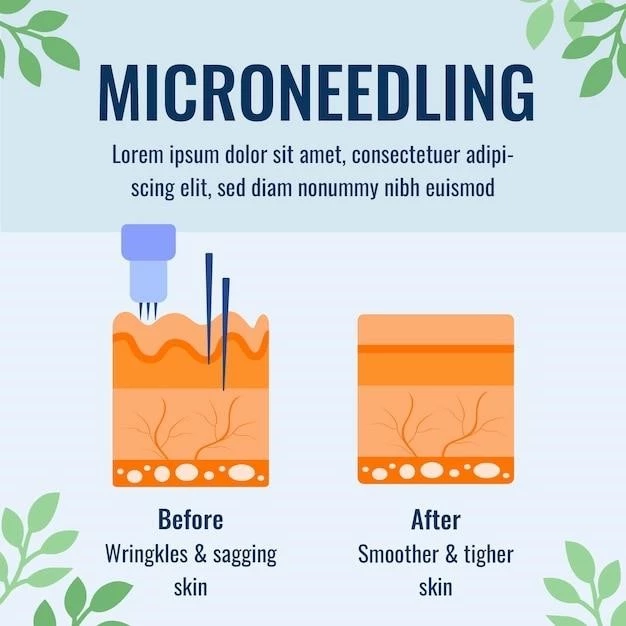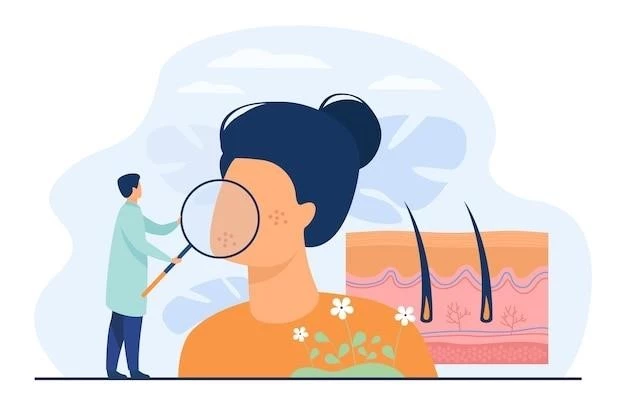Dermatophytosis ー A Comprehensive Guide
If you suspect a fungal skin infection, understanding dermatophytosis is crucial. Learn about the causes, symptoms, diagnosis, treatment, prevention, complications, home remedies, and when to seek medical advice.
I. Understanding Dermatophytosis
Dermatophytosis, also known as ringworm, is a fungal infection of the skin caused by various types of fungi known as dermatophytes. These fungi thrive in warm and moist environments, leading to skin irritation and discomfort. It is essential to identify and treat dermatophytosis promptly to prevent its spread to others and avoid complications. Commonly affected areas include the scalp, feet (athlete’s foot), groin (jock itch), and body. Fungal spores can be transmitted through direct contact with an infected person, animal, or contaminated surfaces. Practicing good personal hygiene, avoiding sharing personal items, and wearing clean, breathable clothing can help reduce the risk of dermatophytosis. If you suspect a fungal infection, consult a healthcare professional for an accurate diagnosis and appropriate treatment. Antifungal medications are typically prescribed to effectively treat dermatophytosis and alleviate itching and rash associated with the infection. Remember to follow your healthcare provider’s instructions carefully and complete the full course of treatment to prevent recurrence. By understanding dermatophytosis and taking preventive measures, you can protect yourself and others from this common skin condition.
II. Common Types of Dermatophytosis
Dermatophytosis can manifest in various forms, affecting different areas of the body. The common types include⁚
- Tinea corporis (ringworm of the body)⁚ Characterized by red, scaly patches on the skin.
- Tinea pedis (athlete’s foot)⁚ Causes itching, cracking, and peeling of the skin on the feet.
- Tinea cruris (jock itch)⁚ Presents as a red, itchy rash in the groin area.
- Tinea capitis⁚ Affects the scalp, leading to hair loss and scaling.
- Tinea unguium (onychomycosis)⁚ Fungal infection of the nails, causing discoloration and brittleness.
- Tinea faciei⁚ Ringworm infection on the face, including the cheeks and nose.
Each type requires specific treatment approaches, often including antifungal medications. Proper diagnosis by a healthcare provider is essential to determine the appropriate course of action for effective management of the infection. If you suspect any of these types of dermatophytosis, seek medical advice promptly to prevent further discomfort and complications.
III. Causes of Dermatophytosis
Dermatophytosis is primarily caused by dermatophytes, a group of fungi that thrive in warm and humid environments. Common causes include⁚
- Direct contact with an infected person, animal, or contaminated surfaces.
- Poor personal hygiene.
- Sweating excessively.
- Wearing tight, non-breathable clothing.
- Sharing personal items like towels, clothing, or sports equipment.
Prevention is key to avoiding dermatophytosis. Practice good hygiene, keep your skin clean and dry, wear loose-fitting clothing, and avoid sharing personal items with others. If you suspect you have been exposed or are experiencing symptoms of a fungal infection, seek prompt medical attention for diagnosis and treatment. Antifungal medications prescribed by healthcare providers are the most effective way to treat dermatophytosis and alleviate discomfort.
IV. Symptoms of Dermatophytosis
Dermatophytosis can present with various symptoms depending on the type and location of the infection. Common signs include⁚
- Red, scaly patches on the skin.
- Itching, burning, or stinging sensation.
- Raised, circular rashes that may be inflamed.
- Peeling, cracking, or blistering of the skin.
- Hair loss or brittle nails in affected areas.
- Mild to severe discomfort and pain.
Recognizing these symptoms is crucial to prompt diagnosis and treatment of dermatophytosis. If you notice any of these signs on your skin or scalp, consult a healthcare professional for evaluation. Early intervention with antifungal medication can help resolve the infection, relieve itching and rash, and prevent complications. Do not ignore persistent or worsening symptoms, as untreated dermatophytosis can spread and lead to more severe skin issues.
V. Diagnosis of Dermatophytosis
Diagnosing dermatophytosis involves a healthcare provider examining the affected skin or nails. Methods used for diagnosis include⁚
- Visual inspection of the skin or nails for characteristic signs of fungal infection.
- Wood’s lamp examination to detect fluorescent areas indicating fungal presence.
- Microscopic examination of skin scrapings or nail clippings for fungal elements.
- Culture tests to identify the specific type of fungus causing the infection.
If you suspect you have dermatophytosis, seek a professional evaluation for accurate diagnosis. Self-diagnosis may lead to incorrect treatment and delay in addressing the infection. Effective treatment relies on a correct diagnosis, so follow your healthcare provider’s guidance on proper testing and treatment options. Remember, early diagnosis and treatment with antifungal medications can help clear the infection and alleviate uncomfortable symptoms.
VI. Treatment Options
Effective treatment of dermatophytosis typically involves antifungal medications to eliminate the fungal infection and alleviate symptoms. Treatment options may include⁚
- Topical antifungal creams, lotions, or powders for mild cases affecting the skin.
- Oral antifungal medications for more severe infections or those involving the scalp or nails.
- Antifungal shampoos for treating fungal infections of the scalp.
- Medicated nail polish or oral antifungals for fungal nail infections.
- Combination therapy as prescribed by healthcare providers for resistant infections.
Follow your healthcare provider’s instructions carefully regarding the use of antifungal medications, treatment duration, and any additional care measures. Consistent treatment adherence is essential to fully clear the infection and prevent recurrence. It is crucial to complete the full course of medication even if symptoms improve to ensure the fungus is eradicated. If you experience persistent or worsening symptoms despite treatment, consult your healthcare provider for further evaluation and management.

VII. Prevention Strategies
Preventing dermatophytosis involves simple yet essential hygiene practices to reduce the risk of fungal skin infections. Consider the following preventive strategies⁚
- Keep your skin clean and dry, especially in areas prone to sweating.
- Avoid sharing personal items like towels, clothing, and sports equipment.
- Wear clean, breathable clothing and change out of sweaty garments promptly.
- Avoid walking barefoot in communal areas like locker rooms and swimming pools.
- Use antifungal powders or sprays in shoes to keep feet dry and prevent athlete’s foot.
- Avoid close contact with infected individuals or animals.
By incorporating these practices into your routine, you can minimize the risk of contracting dermatophytosis and other fungal skin infections. If you participate in activities that may expose you to fungi, take extra precautions to keep your skin clean and dry. Consult a healthcare provider if you suspect a fungal infection or experience persistent skin issues despite preventive measures. Being proactive with prevention can help safeguard your skin health and overall well-being.
VIII. Complications of Untreated Dermatophytosis
Leaving dermatophytosis untreated can lead to various complications, including⁚
- Spread of the infection to other parts of the body or to other individuals through direct contact.
- Secondary bacterial infections due to scratching and damaging the skin’s protective barrier.
- Chronic or recurrent fungal infections that are more challenging to treat.
- Persistent discomfort, itching, and rash that impact your quality of life.
- Skin damage, scarring, or discoloration in severe cases of long-standing infection.
Ignoring symptoms of dermatophytosis may exacerbate the condition and make it more resistant to treatment over time. Prompt diagnosis and appropriate treatment with antifungal medications are crucial to prevent complications and ensure effective resolution of the infection. If you suspect you have dermatophytosis or notice persistent skin issues, consult a healthcare provider for timely intervention; By addressing the infection promptly, you can avoid potential complications and promote skin healing.
IX. Home Remedies and Self-Care
While antifungal medications prescribed by healthcare providers are the primary treatment for dermatophytosis, you can complement medical care with home remedies and self-care practices. Consider the following tips⁚
- Keep the affected area clean and dry to promote healing and prevent moisture buildup that fuels fungal growth.
- Avoid scratching or picking at the rash to prevent skin damage and bacterial infections.
- Apply over-the-counter antifungal creams or powders as directed to alleviate itching and aid in healing.
- Avoid sharing personal items and wash clothing, towels, and bedding in hot water to kill any fungal spores.
- Use separate towels for infected areas to prevent spreading the fungus to unaffected skin.
- Avoid tight, non-breathable clothing that traps moisture and promotes fungal growth.
While home remedies can provide symptomatic relief, they should not replace medical treatment. If symptoms persist or worsen despite self-care measures, consult a healthcare provider for a thorough evaluation and appropriate management. By combining home care with professional treatment, you can effectively combat dermatophytosis and promote skin recovery.
X. When to See a Doctor
If you suspect you have dermatophytosis or are experiencing persistent skin symptoms, it is essential to consult a healthcare provider. Here are instances when you should see a doctor⁚
- If over-the-counter antifungal treatments do not improve your condition.
- If the rash is widespread, severe, or spreading rapidly.
- If you have a weakened immune system due to a medical condition or medication.
- If you develop a fever along with the skin rash.
- If the infection involves the scalp, nails, or sensitive areas like the face or groin.
- If you have recurrent fungal infections that require professional evaluation.
Seeking medical attention promptly can lead to an accurate diagnosis and appropriate treatment with antifungal medications. Early intervention helps prevent complications, facilitate faster recovery, and reduce the risk of spreading the infection to others; Do not delay seeking medical advice if you suspect dermatophytosis, as timely care is crucial for effective management of the fungal infection.
XI. Conclusion
Dermatophytosis, or ringworm, is a common fungal infection of the skin that can cause discomfort and skin irritation if left untreated. Understanding the causes, symptoms, diagnosis, treatment, and prevention strategies for dermatophytosis is essential for managing the condition effectively. Prompt medical attention, accurate diagnosis, and timely treatment with antifungal medications are key to resolving the infection and preventing complications. By practicing good hygiene, wearing breathable clothing, and seeking medical advice when needed, you can minimize the risk of dermatophytosis and promote skin health. Remember, early intervention is vital in addressing fungal skin infections, so do not hesitate to consult a healthcare provider if you suspect you have dermatophytosis. Taking proactive steps towards skin care and following medical advice can help you combat dermatophytosis and maintain healthy, fungus-free skin.
